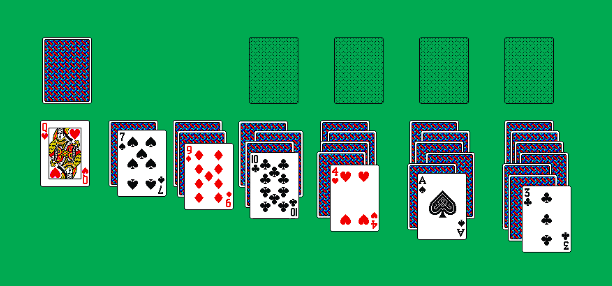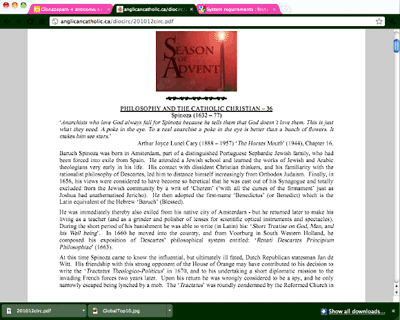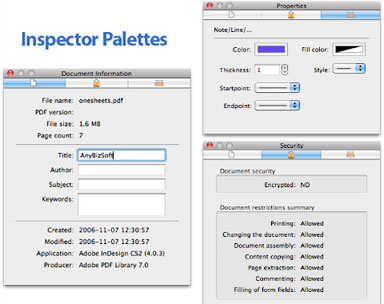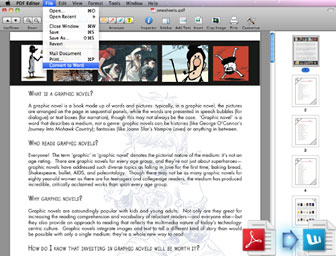MacBook, PowerBook, iBook, and other portable computing is covered
in The 'Book Review. iPad, iPod,
iPhone, and Apple TV news is covered in The
iNews Review.
All prices are in US dollars unless otherwise noted.
News & Opinion
Software
News & Opinion
iOS X: The Union of iOS and OS X?
MacStories' Federico Viticci observes that Apple is still committed
to making the best personal computers, and they will be based on OS X.
Veteran Mac users may still be spooked by the concept underlying Steve
Jobs' statements that Apple is taking the good things learned in three
years of iOS development to the Mac, feeling initially tricked by Jobs
to think that the whole transition would be joyful and painless, but
beginning to have doubts.
Viticci suggests that the past four weeks must have been terrible
for the regular Mac user, with a general assumption developing that
Apple is turning OS X into a desktop variation of iOS.
Not true, he maintains, noting that the thin line that separates
"turning into" and "getting inspired by to improve" lies between the
success of iOS as a platform and the historical nature of the Mac, and
arguing that Apple won't kill the Mac file sytem or drop the Terminal
or force you to buy apps exclusively from the Mac App Store. "At least
not in the next two years."
However, he observes that the iOS has created a new category of
non-geek users who buy a new Mac and expect it to work like an iPad -
and they're the ones who generate new revenue for Apple, so we have to
come to terms with that.
Link: iOS X
Gruber: Apple Will Not Abandon OS X for iOS
Will Apple abandon OS X in favor of iOS? Daring Fireball's John
Gruber, writing for Macworld's Mac of The Future series, says no.
Gruber observes that after more than a decade of stagnant market
share, the Mac is thriving, but the current Mac renaissance has a
certain "be careful what you wish for you just might get it" feel to
it.
John notes that the longtime lament of Mac enthusiasts: "Why don't
more people who are unhappy with Windows PCs switch to the Mac?" has
been answered, and now they are switching in droves, with over half of
all Mac sales in Apple's retail stores first-time Mac buyers.
Ironically, however, Gruber observes that that there's more doubt
today about the long-term prospects of the Mac than there has been at
any time since Steve Jobs returned to Apple in
1997, and the Mac OS is being overshadowed by its own sibling, "the
fabulously precocious iOS". There are more iOS users and developers
than Mac ones, and even with the remarkable growth in Mac sales, after
just six months on the market, the iPad was already outselling the
Mac.
So is the Mac doomed and iOS the future?
Gruber thinks not, noting that the central conceit of the iPad is
that it's a portable computer that does less and, because it does less,
what it does do, it does better, more simply, and more elegantly, a
premise many Mac-users simply can't swallow. Apple can only begin
phasing out the Mac if and when iOS expands to allow us to do
everything we can do on the Mac. Ergo, it's the heaviness ("truck-ness"
if you will) of the Mac that allows iOS to remain light. and the iOS is
able to travel light with no baggage, as it were, because the Mac is
there to carry the baggage.
Link:
What's with the Mac Doomsayers?
Bringing iOS to the Desktop: You Should Get
Excited
AppStorm's David Appleyard says:
"When Steve Jobs gave a preview of the new version of OS X, he
talked at length about the idea of bringing what they'd learned through
iOS 'Back to the Mac.' Unsurprisingly, sweating the details of one of
the best mobile interfaces in the industry has given Apple a great deal
of insight and experience that can be applied to OS X.
"This concept excites some people, and disturbs others. Although I
love my iPad, do I want the same experience on the desktop? Or is [the
Mac] still better suited for more intricate, complex interface
design?"
"I couldn't really see how bringing iOS interface elements and
functionality to the desktop would lead to an overall better experience
. . . Until this week.
"Having spent two days using the Reeder
for Mac beta, I'm completely blown away by how well when executed
to perfection this amalgamation of iOS and OS X can work
. . . If this is the future of Mac software, 2011 can't come
fast enough."
Link: Bringing iOS to
the Desktop: Why You Should Get Excited
Mac of the Future: Storage
Continuing with Macworld's "Mac of the Future" series, Chris Holt,
notes that contrary to the prognostications of some gloomy pundits,
magnetic-based hard drives will remain the dominant storage media for
at least the next two years in both laptops and desktop Macs. He
acknowledges that we'll see increased adoption of SSDs, but amounting
to only 5-6% of the storage market, and predicts that most desktop and
portable drives sold over the next two years will still be magnetic,
with capacities growing further and a likely shift from desktop drives
to bus-powered portable units.
Link: Mac of the Future:
Storage
Susan Kare: Interview with the Original Mac Icon
Designer

 Mashable has
posted an interview with Susan Kare, the screen graphics and digital
font designer for the original Macintosh computer and the original Mac
OS Finder icons back in the early '80s - images that have become part
of the visual language of computing. Kare was responsible for designing
the Happy Mac, the Command key, the Trash icon, the paint can fill
icon, the wristwatch "busy" icon, the Chicago font, and many more
elements of the original Mac OS and Mac apps.
Mashable has
posted an interview with Susan Kare, the screen graphics and digital
font designer for the original Macintosh computer and the original Mac
OS Finder icons back in the early '80s - images that have become part
of the visual language of computing. Kare was responsible for designing
the Happy Mac, the Command key, the Trash icon, the paint can fill
icon, the wristwatch "busy" icon, the Chicago font, and many more
elements of the original Mac OS and Mac apps.
Kare has just launched her new print site, Kare Prints (offering limited edition,
signed and numbered prints of her classic designs), and takes take a
look back at some of her most memorable creations.

Susan Kare designed the cards used in Solitaire for Windows 3.0.
Post-Mac Kare designs include the cards used in the version of
Solitaire that shipped with Windows 3.0 and limited to its 16-color
palette, some icons used by Facebook, and the San Francisco Water &
Light logo.
Link: Susan
Kare: Interview with an Iconic Designer
EDA Survey Documents Usage and Future Plans of
Xserve Owners
PR: A survey conducted by the Enterprise Desktop Alliance, a
collaboration among enterprise class software companies to deliver
solutions that streamline the deployment, integration, and management
of the Mac in sophisticated Windows-centric IT environments, indicates
that Apple Xserve owners are
considering a wide range of options in response to Apple's November 5,
2010 announcement that shipment of the Xserve hardware platform will
end on January 31, 2011.
While 65% of respondents expect to stay with their current Xserves
for at least the next two years, when the time comes to replace the
Xserve, over one-third will migrate to one of Apple's recommended
alternative platforms - the Mac
Pro and Mac mini, both
of which can run Apple's OS X Server software and are available in
server-configured versions. Nearly as many respondents were unsure as
to which solution they would choose for services currently run on an
Xserves. A plurality of Xserve owners believes that the transition from
the Xserve will not be more expensive than staying with their current
system.
The online survey, conducted from November 8 to November 12,
includes responses from 1,200 commercial, government, and education
users of Xserves who answered questions about their current uses of
Xserve and their anticipated timing and plans for transitioning to
other hardware.
The most popular use of the Xserve - 90% of all classes of
organizations - was as a file server. Of the top 10 Xserve deployments,
eight were services that provide management support for the Mac
desktops and laptops in their organization. These include software
update, directory services, workgroup manager, client management, and
related centralized administrative functions. Besides file server, the
only other non-administrative use in the top 10 was as a Web
server.
"The Enterprise Desktop Alliance conducted this survey to provide an
objective view of the services that organizations in each market
segment operate on the Xserve today and how those organizations plan to
deliver the services in the future," says T. Reid Lewis, president of
Group Logic, a founding member of the Enterprise Desktop Alliance. "We
want to help IT professionals make the best choices for their
organizations arming them with an aggregate view of the plans of their
peers."
When asked how long they expect to keep their Xserves, a plurality
(36%) of respondents said they plan to keep their servers going "as
long as the fan keeps turning" and another 30% expect to keep using
them for at least two years. The remaining 35% think they will
transition within one year.
When asked which system they'll use once they do retire their
Xserves, approximately one-third of the organizations indicated that
they plan to stay with Mac OS X Server software on alternative Mac
hardware for their Mac administrative services. However, for file
services a plurality said they plan to transition to Windows, and for
web servers, to Linux. Nearly 25% responded that they were unsure which
system they would use for most services. "Unsure" was a popular answer
to many questions in the survey - frequently the second or third most
common choice - and accurately reflects the attitudes of these
administrators at the time.
When it comes to the continued purchase of additional Mac laptops
and desktops, 70% of the respondents reported no impact on their
organizations' inclination to buy more Macs for users.
"We were surprised by the announcement, but it doesn't affect our
commitment to the Mac," comments Ross Kovelman, Manager, Information
Technology at The Hobart Group, a marketing firm for Healthcare
organizations in managed markets. "We expect to keep our Xserves as
long as they are a viable solution and will look at Apple's server
offerings when the time comes."
Owners of Xserves have a proportionally higher number of Macs than
do most organizations. Among the respondents with more than 100
employees, 17% of their laptops and desktops are Macs compared to 4.5%
among all organizations their size.
In almost all categories except XSAN replacement, the respondents
acknowledged that it would cost the same or less to migrate to another
platform. They were especially confident that migrating file services
to Windows would be less expensive, though "Not sure" was the most
common response for all of the other categories related to costs.
Xserve owners may continue to take the survey until
December 15 after which the EDA will compile a final report.
The Enterprise Desktop Alliance is hosting a webcast
Xserve Transition Options on Tuesday February 1, 2011.
Enterprise Desktop Alliance:
Apple Discontinues Compact Wired Keyboard
AppleInsider's Katie Marsal reports:
"Apple has quietly discontinued its compact wired keyboard, and only
offers the full-size wired option on its store."
Link: Apple Discontinues
Compact Wired Keyboard, Hulu Plus Claims Strong Start
Software
Google Chrome 8.0.552.215 Includes Built-in PDF
Viewer
PR: Late Thursday, Google released a substantially updated
build of the Chrome browser with over 800 bug fixes and a new PDF
viewer running in a "sandbox."
 In a blog entry, Google software engineers Justin Schuh and
Carlos Pizano note that since last spring, Google has been working
closely with Adobe to allow Flash Player to take advantage of new
sandboxing technology in Chrome, extending the work already done with
sandboxing for HTML rendering and JavaScript execution.
In a blog entry, Google software engineers Justin Schuh and
Carlos Pizano note that since last spring, Google has been working
closely with Adobe to allow Flash Player to take advantage of new
sandboxing technology in Chrome, extending the work already done with
sandboxing for HTML rendering and JavaScript execution.
In particular, users of Windows XP will see a major security
benefit, as Chrome is currently the only browser on the XP platform
that runs Flash Player in a sandbox. This first iteration of Chrome's
Flash Player sandbox for all Windows platforms uses a modified version
of Chrome's existing sandbox technology that protects certain sensitive
resources from being accessed by malicious code, while allowing
applications to use less sensitive ones, representing a first step in
further reducing the potential attack surface of the browser and
protecting users against common malware.
Google will be using this initial effort to provide fully sandboxed
implementations of the Flash Player on all platforms.
New in version 8.0.52.215:
- In addition to the over 800 bug fixes and stability improvements,
Chrome 8 now contains a built in PDF viewer that is secured in Chrome's
sandbox. The PDF viewer feature works great, by the way.
As always, this new build also contains the latest security
fixes.
Mac system requirements: Mac OS X 10.5 or later on Intel-based
Mac.
Link: Google
Chrome Browser
ccNotepad for Safari: Quick Access to
notepad.cc
PR: ccNotepad is a free add-on for Safari that opens the note
website notepad.cc in a small window next to your active Safari window
when you click the toolbar button or type a configurable hotkey.
While surfing the Web, do you ever find yourself wanting to jot down
a quick note, but then the thought of firing up a note-taking
application or opening a note-taking website makes you give up on the
idea? If so, this fun little Safari extension might be just the
thing.
Click ccNotepad's button on Safari's toolbar, and it opens a small
side window and loads notepad.cc in it. (You can also use the
configurable hotkey, which defaults to Command-Shift-O.) Then just type
your note - that's all she wrote.
The first time you open ccNotepad, it will generate a new note with
a random name, just like when you enter http://notepad.cc without a
pathname in Safari's address bar. But then it will remember the
generated pathname and load the same note the next time you open
ccNotepad.
If you want to load a specific note into ccNotepad, type Command-L
to reveal the address bar. Then enter the desired notepad.cc address
and press Enter. Alternatively, open the note you want in a normal
window, and then click ccNotepad's toolbar button. It will open the
same note in its own window.
If you select some text before clicking the toolbar button or typing
the hotkey, that text will be automatically appended to the note loaded
in ccNotepad. (This will happen whether ccNotepad is already open or
not.) If you want to repeatedly append selections to the note without
having ccNotepad come to the front each time, click the little pin
button on ccNotepad's bottom toolbar.
The bottom toolbar also has buttons that control what type of font
the note is displayed in (serif, sans-serif, or monospace) and whether
a new (empty) line is inserted before auto-appending a selection, after
auto-appending, or both before and after.
One more thing - if you don't like the ccNotepad window's default
size and position, resize and/or move it as you like. Then right-click
inside the window and select Save Window Size/Position in the context
menu.
Features:
- Remembers your last notepad and opens it again next time.
- If you select some text on a web page before opening ccNotepad,
that text will be automatically appended to the note.
- You can view your note in a serif, sans-serif, or monospace
font.
- You can save the size and position of the notepad window.
New in version 1.0.2:
- Added support for saving the notepad window size and position.
System requirements:
- Mac OS X 10.5.8 or later.
- Safari 5 or later.
Link: ccNotepad
MailMate 0.9.7 New IMAP-only Mail Client
PR: MailMate is an ambitious new email client for Mac OS X.
It is currently in a beta state which means that it has not been
thoroughly tested by users and it lacks a few features which can
reasonably be expected from a modern email client. We are working on
the last part and we hope you would like to help us with the first
part. Beta-versions of MailMate are free to use, but if you would like
to be an early supporter, it is also possible to buy a license. Early
supporters are rewarded with a discounted price and lifetime licenses
think of it as user-provided venture capital.
New in version 0.9.7:
- Numerous minor features and bug fixes.
Features
- All message headers and text bodies are indexed and are available
for making advanced searches
- Multiple ways to easily use displayed names, subjects, dates and
more to quickly search for related messages
- Easily extend a set of messages with messages from the same
thread/discussion
- Any search can be stored as a smart mailbox
- Search for specific body parts (images, PDF-files, embedded
messages, etc.)
- Command-line program for alternative access to the database of
messages (emate)
Organize
- Easily move messages to any other mailbox using only a few
keystrokes
- Mute messages in order to automatically handle later incoming
related messages (they are marked as read and moved to the same
location as their muted parents)
- Dynamically created sub-mailboxes which can, e.g., be used to
automatically display all mailing list messages in separate smart
mailboxes
- Server-side mailbox subscriptions supported
- Client-side mailbox subscriptions supported
- File-based commands for automatically moving or changing the flags
of messages (experimental)
View
- Easily switch between mailboxes using only a few keystrokes
- Standard universal mailboxes (Inbox, Archive, Drafts, Sent
Messages, Junk and Deleted Messages)
- Special mailbox containing all messages
Special mailbox containing all message body parts (MIME)
- Navigation history similar to web browsers
- Multiple dock and/or menu bar counters
- Possible use of scripts for altering displayed body text
(experimental)
System requirements:
- Mac OS X Leopard (10.5) - final release may require Snow Leopard
(10.6).
- Only the IMAP protocol is supported and the so-called UIDPLUS
extension is required for the IMAP server (MailMate will tell you it is
not available). There is no POP3 support.
Personal Lifetime License Key: $39.95
Link: MailMate
Beta
AnyBizSoft PDF Editor for Mac Free Beta
PR: The AnyBizSoft PDF Editor for Mac lets you:
- Edit PDF Text: Modify, edit PDF text within editable text
blocks
- Insert Images: Add images and signatures. Crop, move, or resize
them
- Convert PDF to Word: Edit PDF files in Word as easy as you
think
- Annotate: Annotate, highlight, underline, and strikethrough
 Frustrated about editing PDF files on Mac OS X? Want to
edit PDF files directly as easy as in a Word processor? Then try
AnyBizSoft PDF editor for Mac. With this program's help, you can:
Frustrated about editing PDF files on Mac OS X? Want to
edit PDF files directly as easy as in a Word processor? Then try
AnyBizSoft PDF editor for Mac. With this program's help, you can:
- Edit text in original PDF files directly within editable text
blocks
- Add text, images, and signatures into PDF files (Supported image
formats: JPEG, PNG, TIF, and BMP)
- Crop, Resize and reposition images in PDF files
- Markup, annotate PDF files easily while reading
- Edit PDF files in Microsoft Word by converting PDF to Word
- Drag and drop blocks of PDF text and images to change the
layout
- Change font-size, color, and font-family
- Edit Bookmarks and Properties
- Add or remove bookmarks in PDF files
- Add, remove or edit properties of the PDF documents, including
title, author, subject and keywords
- Preserve text, images, tables, columns, etc. after conversion
- Support encrypted PDF file conversion
 Support
Microsoft Word for Mac 2008/2011
Support
Microsoft Word for Mac 2008/2011- Add shape annotations, including arrowhead, beeline, rectangle and
ellipse
- Markup PDF text with text tools, including highlight, underline,
and strikethrough
- Customize annotation color, markup color, line-thickness,
line-style, etc.
- Support PDF files in 12 languages: English, Turkish, Thai, Latin,
Korean, Greek, Cyrillic, Japanese, Chinese, German, French, and
Italian
- Support Adobe PDF 1.0-1.7
- Support opening 10 PDF files simultaneously
- View PDF files as an intuitive PDF reader
- Support searching in PDF files, and highlighting the results
- Support emailing current document as attachment to others
AnyBizSoft PDF Editor is a standalone program, and does not require
additional software
System Requirements
- Operating System: Mac OS X 10.5 or later
- CPU: Intel (32-bit) 512 MHz
- Hard Disk: 100 MB and above
Link: PDF Editor for
Mac
Desktop Mac Deals
For deals on current and discontinued 'Books, see our 13" MacBook and MacBook Pro,
MacBook Air, 13" MacBook Pro, 15" MacBook Pro, 17" MacBook Pro, 12" PowerBook G4, 15" PowerBook G4, 17" PowerBook G4, titanium PowerBook G4,
iBook G4, PowerBook G3, and iBook G3 deals.
We also track iPad,
iPhone, iPod touch, iPod classic, iPod nano, and iPod shuffle deals.


 Mashable has
posted an interview with Susan Kare, the screen graphics and digital
font designer for the original Macintosh computer and the original Mac
OS Finder icons back in the early '80s - images that have become part
of the visual language of computing. Kare was responsible for designing
the Happy Mac, the Command key, the Trash icon, the paint can fill
icon, the wristwatch "busy" icon, the Chicago font, and many more
elements of the original Mac OS and Mac apps.
Mashable has
posted an interview with Susan Kare, the screen graphics and digital
font designer for the original Macintosh computer and the original Mac
OS Finder icons back in the early '80s - images that have become part
of the visual language of computing. Kare was responsible for designing
the Happy Mac, the Command key, the Trash icon, the paint can fill
icon, the wristwatch "busy" icon, the Chicago font, and many more
elements of the original Mac OS and Mac apps.
 In a blog entry, Google software engineers Justin Schuh and
Carlos Pizano note that since last spring, Google has been working
closely with Adobe to allow Flash Player to take advantage of new
sandboxing technology in Chrome, extending the work already done with
sandboxing for HTML rendering and JavaScript execution.
In a blog entry, Google software engineers Justin Schuh and
Carlos Pizano note that since last spring, Google has been working
closely with Adobe to allow Flash Player to take advantage of new
sandboxing technology in Chrome, extending the work already done with
sandboxing for HTML rendering and JavaScript execution. Frustrated about editing PDF files on Mac OS X? Want to
edit PDF files directly as easy as in a Word processor? Then try
AnyBizSoft PDF editor for Mac. With this program's help, you can:
Frustrated about editing PDF files on Mac OS X? Want to
edit PDF files directly as easy as in a Word processor? Then try
AnyBizSoft PDF editor for Mac. With this program's help, you can: Support
Microsoft Word for Mac 2008/2011
Support
Microsoft Word for Mac 2008/2011
